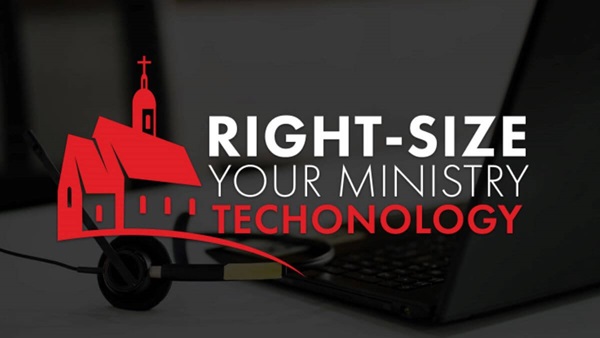Right-Sizing Your Ministry’s IT: Strategies for Cost Optimization
Your IT needs evolve with your ministry. But with limited budgets, it’s easy to overspend and drain resources, or underspend and be left vulnerable to security breaches. The key to success isn’t about having the latest gadgets— it’s about making sure your IT infrastructure is the right size for your ministry's needs. Don’t let a wrong-sized technology budget hinder your mission!
What Does It Mean to Right-Size Your IT?
Right-sizing your ministry’s IT does not mean cutting corners! It’s about evaluating your current technology setup and adjusting accordingly to get the best value for your investment. Just like with right-sizing your insurance, your ministry budget, and your ministry’s HR getting your IT budget just right will maximize your impact while minimizing costs.
Technology Cost Optimization: A Strategic Approach
One of the best ways to right-size your IT is through technology cost optimization. This strategy focuses on getting the most out of your current technology while eliminating wasteful spending.
How to Right-Size Your IT
1. Assess Your Current Setup:
- Inventory Your Assets: List all the technology your ministry currently uses—from hardware like computers and servers to software subscriptions and cloud services.
- Identify Redundancies: What’s working? What’s not? Are there subscriptions you’re paying for but not using? Are there any tools that are outdated or underutilized?
2. Align IT With Ministry Goals:
- Prioritize Your Needs: Determine which technology directly supports your ministry’s mission. Focus on investments that enhance your operations!
- Make Smart Investments: Invest in essentials like a reliable live-streaming setup for virtual services, social media tools for digital outreach, robust security measures for protecting congregation information, and software for managing donations.
3. Explore Cost-Effective Solutions:
- Cloud Services: Moving to cloud-based solutions can reduce the need for expensive on-site hardware and provide more flexibility for your ministry’s IT needs.
- Open-Source Software: If an individual in your ministry has the tech experience or bandwidth to safely do so, consider free or low-cost open-source software options that offer similar functionality to their pricier counterparts. It is crucial that you ensure the replacement solutions meet both Ensure that they meet your security and support requirements.
4. Optimize Your IT Budget:
- Regularly Review and Adjust: Make IT budget reviews a regular part of your financial planning. Don’t hesitate to reallocate resources if certain tools or services no longer serve your ministry well. Regularly reviewing your IT assets and adjusting spending based on changing needs allows you to cut costs without sacrificing functionality.
- Utilize GCFA’s Technology Discounts: Need access to Outlook, Word, Excel, PowerPoint, or other Microsoft applications? What about Adobe Acrobat Pro or the full Creative Cloud Suite? Take advantage of our Microsoft Discounts and Adobe Discounts for your ministry!
- Get to Know the UMC Partners in Ministry: Did you know GCFA partners with businesses outside the connection, like Home Depot and Staples, to deliver savings for United Methodist ministries? Have you heard about our recent partnership with Tithe.ly, a free church-giving platform? Explore these partners and more on our Ministry Partners program page.
Right-sizing your ministry’s IT is not a one-time task—it’s an ongoing process, but you don’t have to go it alone! Let UMC Support be your strategic cost optimization partner, providing budgetary and technical guidance to support your ministry’s future. Start building your technology roadmap with our IT experts today! Contact UMC Support at ConnectionalRelations@GCFA.org or (833) UMC-GCFA.
Don’t forget to explore other resources in our series on revitalizing ministries in the wake of recent challenges:
- Right-Size Your Insurance
- Right-Size Your Ministry Budget
- Right-Size Your Church's HR
- Right-Size Your Stewardship
Originally published by Finance and Administration. Republished with permission by ResourceUMC.

